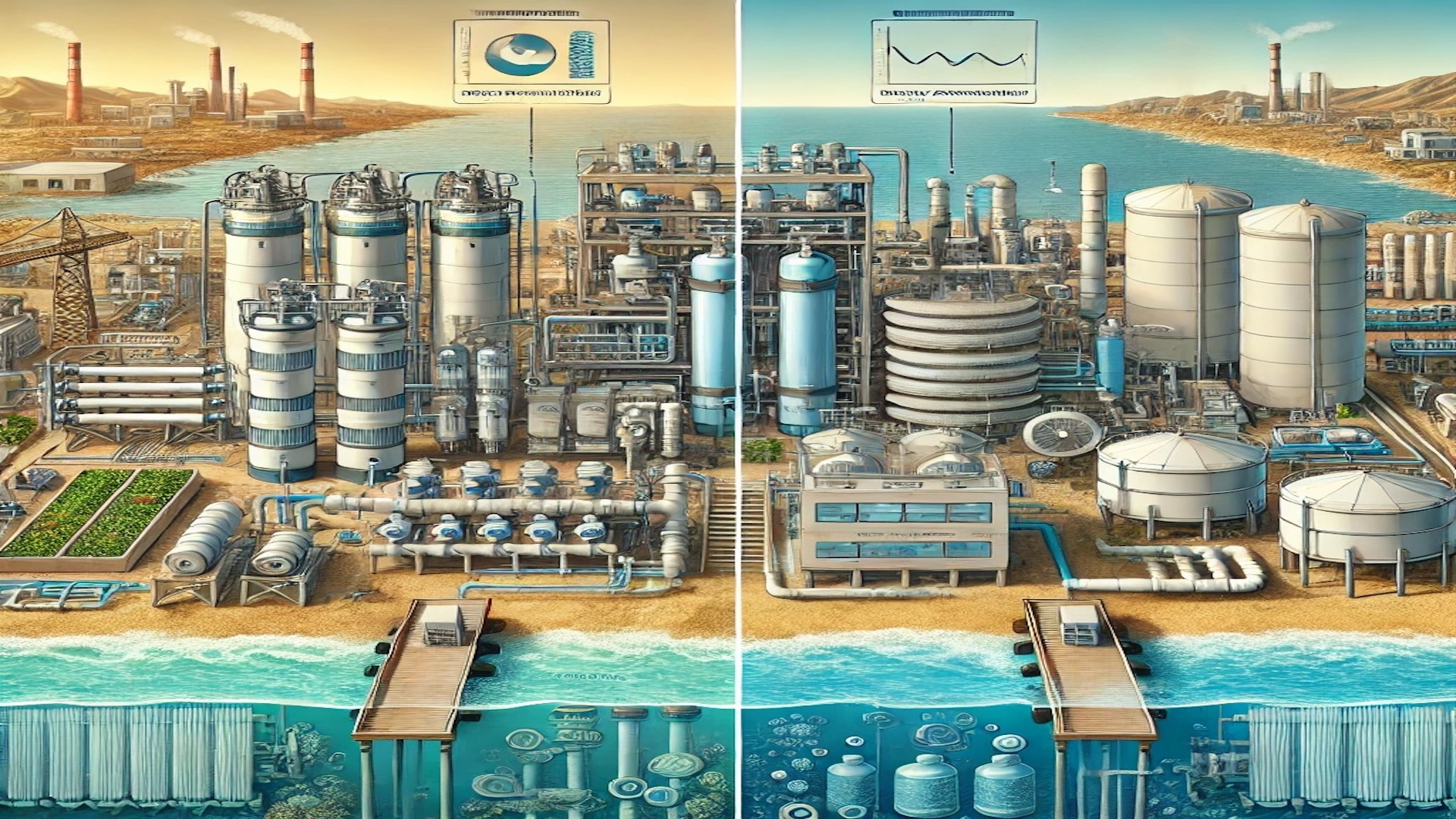INDUSTRIAL RO Vs. SEA WATER DESALINATION PLANT

INDUSTRIAL RO Vs. SEA WATER DESALINATION PLANT
Industrial RO vs. Sea Water Desalination Plant
Industrial Reverse Osmosis (RO) Plants and Sea Water Desalination Plants are both used for water purification but serve different purposes and operate under varying conditions.
Industrial RO Plants
Industrial RO systems are designed to treat groundwater, surface water, or wastewater for reuse in industries like power plants, pharmaceuticals, food processing, and electronics. They use semi-permeable membranes to remove dissolved salts, chemicals, and contaminants, producing high-purity water. These systems typically operate at lower pressures compared to desalination plants and have lower energy consumption. However, they are not suitable for treating seawater due to high salinity levels.
Sea Water Desalination Plants
Seawater desalination plants are designed to remove high concentrations of salt (35,000+ ppm) from seawater, making it safe for drinking and industrial use. They utilize Reverse Osmosis (SWRO) or Thermal Distillation (MSF/MED), requiring higher pressure and energy to force water through specialized membranes that reject salt and impurities. These plants are essential in water-scarce coastal regions but are more expensive and energy-intensive compared to standard RO systems.
Key Differences
• Water Source: Industrial RO treats brackish/industrial water; desalination targets seawater.
• Pressure & Energy Use: Desalination requires higher pressure and more energy.
• Membranes: SWRO membranes are more durable and specialized.
• Application: Industrial RO is for process water, while desalination is for potable water supply.
Sea water desalination is a crucial solution for water scarcity, while industrial RO ensures process efficiency across industries.